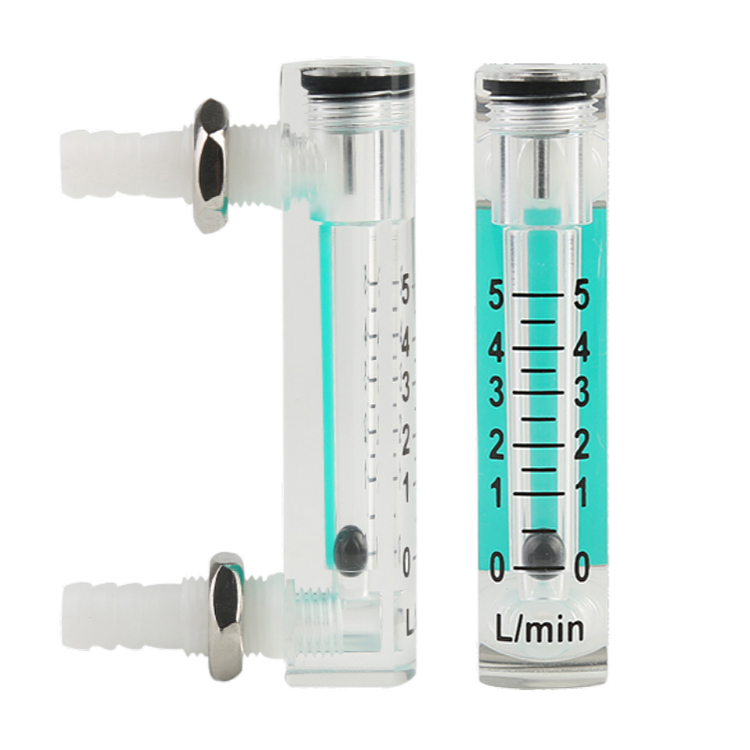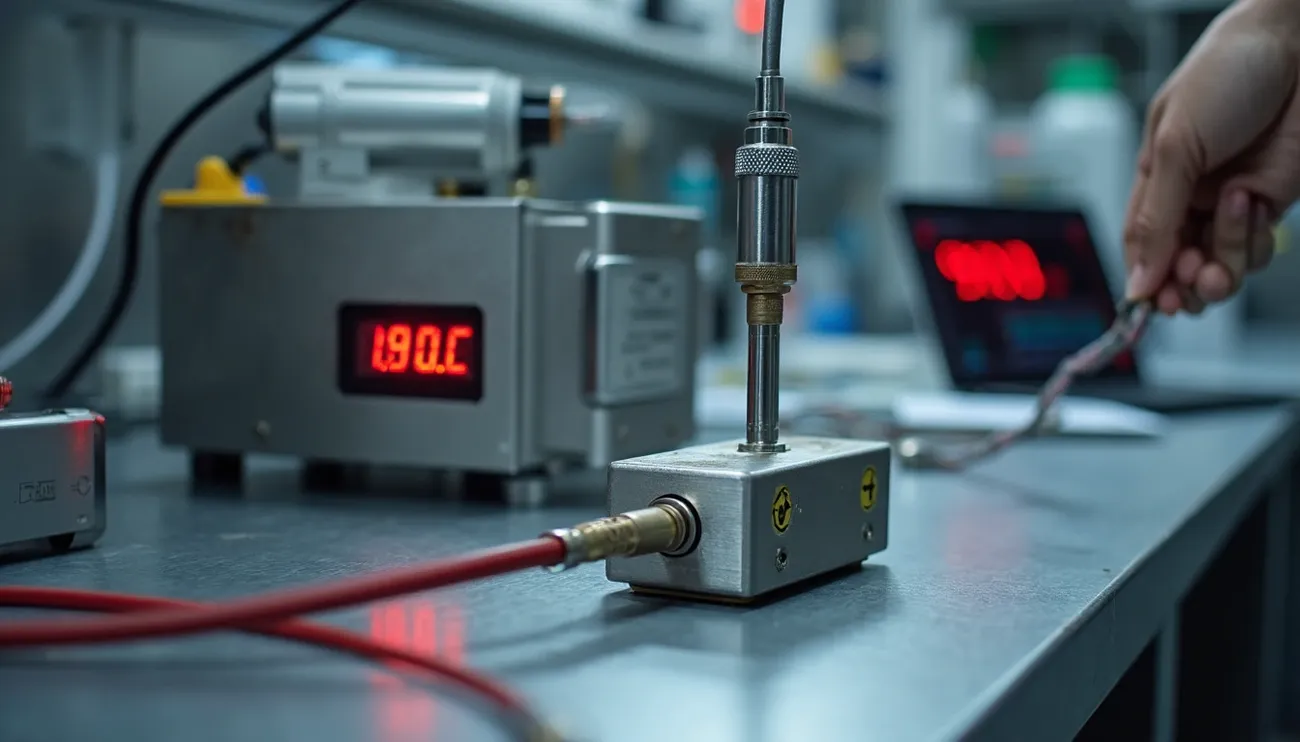Oxygen therapy plays a crucial role in the treatment of various respiratory conditions, ensuring that patients receive an adequate supply of oxygen to support their bodily functions. An essential component of oxygen therapy is the accurate measurement of oxygen flow, which helps healthcare professionals monitor and adjust the oxygen delivery to meet the patient’s specific needs. This is where an oxygen flow meter comes into play. By accurately measuring and monitoring the flow rate of oxygen, these devices ensure that patients receive the optimal amount of oxygen for their condition, promoting better outcomes and improved quality of life.
What is the oxygen flow meter?
An oxygen flow meter is a precision instrument designed to measure the flow rate of oxygen as it is delivered to a patient. It consists of various components that work together to accurately gauge the amount of oxygen being administered. One of the key components is the flow sensor, which measures the velocity of the oxygen passing through it. This information is then relayed to the flow meter display, where it is converted into a readable flow rate. The flow meter display typically consists of a scale or digital readout that allows healthcare professionals to monitor and adjust the oxygen flow accordingly.

Oxygen Flow Meter features
By using capacitive sensor is the key core of oxygen flow meter to realize high precision and high stability. It has completely changed the temperature drift of the original strain type target flowmeter, the poor ability of anti overload (impact), and the existence of static seal points, etc. It not only takes the original technical advantage of the target flowmeter, but also has high measurement accuracy compared with that of the volumetric flowmeter. In addition, with its unique anti-interference, anti impurity performance, it can be used as a substitute for conventional flow, especially in the case of small flow, high viscosity, easy clotting, high temperature, strong corrosion, strong vibration, etc. At present, it has been widely used in the field of metallurgy, petroleum, chemical, energy, food, environmental protection and other fields of flow measurement.
Different Types of Oxygen Flow Meters and Their Features
There are several different types of oxygen flow meters available on the market, each with its own unique features and advantages. One common type is the variable area flow meter, also known as a rotameter. This type of flow meter uses a tapered tube with a float inside it. As the oxygen flows through the tube, the float rises or falls, indicating the flow rate. Variable area flow meters are known for their simplicity, reliability, and ease of use.
Another type of oxygen flow meter is the digital flow meter. These meters utilize electronic sensors to measure and display the flow rate. They offer greater accuracy and precision compared to variable area flow meters and often come equipped with additional features such as alarms and data recording capabilities.
Factors to Consider When Choosing an Oxygen Flow Meter
When selecting an oxygen flow meter, several factors should be taken into consideration. Firstly, price is an important consideration, as flow meters can vary significantly in cost. It’s essential to strike a balance between affordability and functionality to ensure that the chosen flow meter meets the specific needs of the healthcare facility or individual patient.
Measurement accuracy is another critical factor to consider. The flow meter should provide precise and reliable readings to ensure that the patient receives the correct amount of oxygen. Additionally, functionality is important, as some flow meters may offer additional features such as built-in alarms, data logging capabilities, or compatibility with other medical devices.
Exploring the Different Parts of an Oxygen Flow Meter and Their Functions
An oxygen flow meter consists of several parts, each serving a specific function in the measurement and delivery of oxygen. The key components include the flow sensor, flow meter display, flow control valve, and oxygen inlet and outlet ports.
The flow sensor is responsible for measuring the velocity of the oxygen passing through it. It converts this information into a readable flow rate that is displayed on the flow meter display. The flow control valve allows healthcare professionals to adjust the flow rate as needed, ensuring that the patient receives the appropriate amount of oxygen.
The oxygen inlet and outlet ports provide the connection points for the oxygen supply and delivery devices, such as nasal cannulas or oxygen masks. These ports ensure a secure and leak-free connection, enabling the accurate delivery of oxygen to the patient.
How to Properly Measure and Monitor Oxygen Flow Rate Using a Flow Meter
Accurate measurement and monitoring of oxygen flow rate are crucial in optimizing oxygen therapy. To measure the flow rate using an oxygen flow meter, healthcare professionals should follow a few simple steps. First, ensure that the flow meter is properly calibrated and functioning correctly. Then, connect the oxygen supply to the inlet port and the delivery device to the outlet port.
Once the connections are secure, adjust the flow control valve to the desired flow rate. Monitor the flow meter display to ensure that the flow rate remains stable within the prescribed range. Regularly check the flow meter for any signs of malfunction or deviations from the desired flow rate. By following these steps, healthcare professionals can ensure the accurate measurement and monitoring of oxygen flow rate, optimizing the effectiveness of oxygen therapy.
Benefits of Using an Oxygen Flow Meter in Oxygen Therapy
The use of an oxygen flow meter offers numerous benefits in oxygen therapy. Firstly, it allows for precise and accurate measurement of oxygen flow rate, ensuring that patients receive the optimal amount of oxygen for their condition. This accuracy promotes better treatment outcomes and reduces the risk of complications associated with over or under-administration of oxygen.
Additionally, an oxygen flow meter enables healthcare professionals to monitor and adjust the flow rate as needed, providing a customized and individualized approach to oxygen therapy. This flexibility ensures that patients receive the appropriate level of oxygen throughout their treatment, enhancing their comfort and overall well-being.
Common Misconceptions About Oxygen Flow Meters
Despite the importance of oxygen flow meters in optimizing oxygen therapy, there are some common misconceptions that surround these devices. One misconception is that flow meters are only necessary for patients with severe respiratory conditions. In reality, oxygen flow meters are essential for all patients receiving oxygen therapy, regardless of the severity of their condition. Accurate measurement and monitoring of oxygen flow rate are crucial for ensuring the effectiveness of the treatment and preventing complications.
Another misconception is that all flow meters provide the same level of accuracy and reliability. In truth, different flow meters vary in terms of their measurement accuracy and features. It is important to choose a flow meter that meets the specific needs of the patient and healthcare facility to optimize the benefits of oxygen therapy.
Frequently Asked Questions About Oxygen Flow Meters
- Q: Can I use an oxygen flow meter at home? A: Yes, oxygen flow meters are available for home use and can be used under the guidance of a healthcare professional.
- Q: How often should an oxygen flow meter be calibrated? A: Calibration frequency may vary depending on the specific flow meter model and manufacturer’s recommendations. It is best to consult the manufacturer or follow the guidelines provided.
- Q: Can oxygen flow meters be used with all types of oxygen delivery devices? A: Yes, oxygen flow meters are designed to be compatible with various oxygen delivery devices such as nasal cannulas, oxygen masks, and oxygen tents.
Conclusion – The Importance of Optimizing Oxygen Therapy With the Use of an Oxygen Flow Meter
In conclusion, an oxygen flow meter plays a vital role in optimizing oxygen therapy. By accurately measuring and monitoring the flow rate of oxygen, healthcare professionals can ensure that patients receive the optimal amount of oxygen for their condition. The use of an oxygen flow meter offers numerous benefits, including precise measurement, individualized treatment, and enhanced patient comfort. It is important to choose a flow meter that meets the specific needs of the patient and healthcare facility to optimize the benefits of oxygen therapy. By utilizing an oxygen flow meter, healthcare professionals can improve treatment outcomes and promote better quality of life for patients relying on oxygen therapy.
CTA: For more information on oxygen flow meters and their benefits in optimizing oxygen therapy, please visit our website or contact our customer support team.




